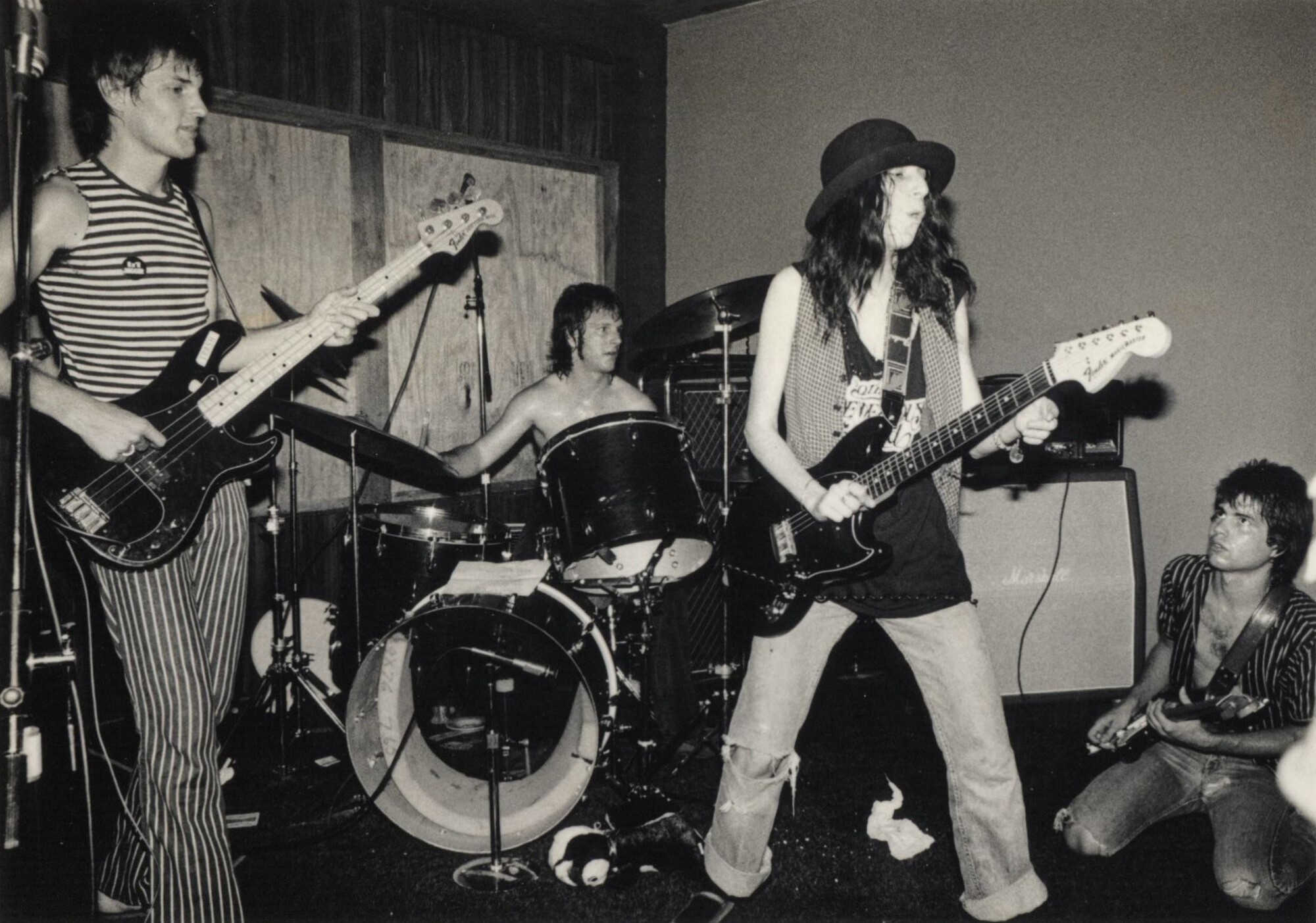The Skunks | Interview | Jesse Sublett
Jesse Sublett from Austin, Texas has been an author, artist and musician for several decades now. In the 70s he was a member of The Skunks, a legendary punk band.
His writing career got him in all the major newspapers and has published several novels, while as an visual artist his works primarily consist of acrylic on canvas and has been praised by many. Sublett moved to Austin in 1974 after attending Southwest Texas State University. He was in Austin from 1974 to 1986, where he was bassist and lead singer for a number of bands, most notably punk group The Skunks. He moved to Los Angeles in 1987 and continued to play music and write on the West Coast.
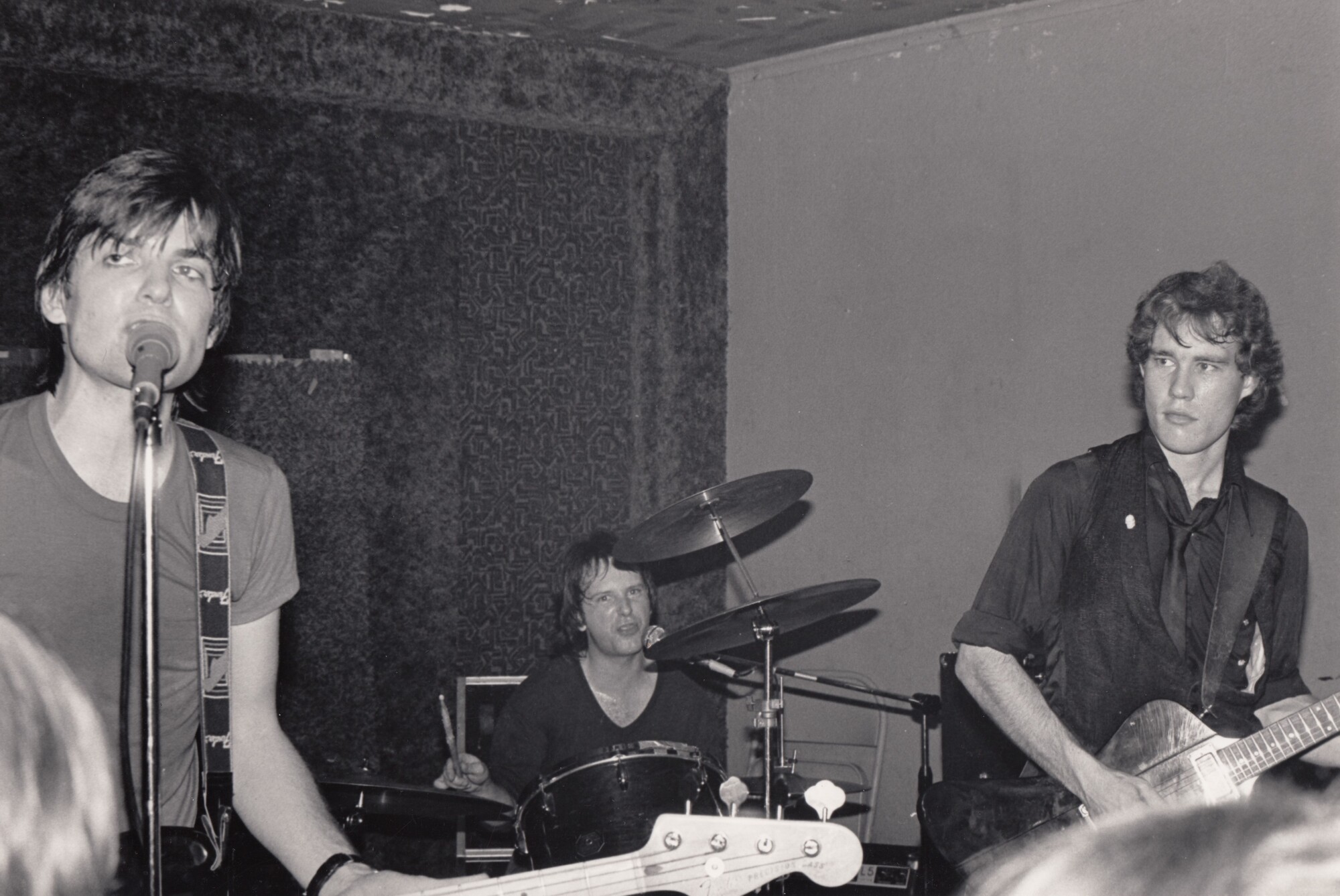
“People came to our shows expecting something wild and different”
Would you like to share about your upbringing? Where did you all grow up? Tell us about daily life back in your teenage years.
Jesse Sublett: I was born in 1954 and grew up in Johnson City. It’s a very small town in the Texas Hill country, 45 miles from Austin and 60 miles from San Antonio. In those days it was quite cut off from urban life, with less than 1,000 residents. I value some aspects of growing up there, but by the time I was a teenager, I had become the archetypical oddball outcast and couldn’t wait to escape. To my great fortune, however, by age 14 I was able to tag along with my older brother to see rock concerts in San Antonio and Austin. In high school, I saw scores of great rock bands: Led Zeppelin, Spirit, Canned Heat, Blind Faith, Free, Steppenwolf, and many more, including the greatest of them all, The Rolling Stones.
One of the greatest bands I ever saw was the band Free, who opened for Blind Faith. I’d never heard of them before and they instantly became one of my favorite bands. I still marvel at their artistry.
At my first rock concert in 1969, I saw Johnny Winter open for Steppenwolf, and it’s still a powerful memory. I had Johnny’s first singles from his incredible debut LP, ‘Progressive Blues Experiment’. By the time I was attending college at Texas State University in San Marcos, Johnny’s former bassist and drummer, Tommy Shannon and Uncle John Turner, were playing in a band called Krackerjack, a popular and hugely influential glam rock/blues band that featured a succession of truly great guitar players, including Stevie Ray Vaughan. I became a huge, huge fan of Krackerjack and eventually, as an Austin musician, I got to know all of these people.
Growing up in a small rural town in the 1960s, you had to really work at it to be a rock ‘n’ roller. When I was 14, I bought my 45 rpm singles at an appliance store. I bought my guitar strings at the hardware store. I was harassed quite a bit by the cowboy crowd. On the other hand, I was lucky in many ways. School was easy for me.
The Vulcan Gas Company, Austin’s first psychedelic dance hall, opened in 1967. I went there to see shows starting in 1969 and caught some great blues artists, including Mance Lipscomb, Big Joe Williams and Mississippi Fred McDowell. I also saw many of the local hippie bands, but missed some great shows, like Velvet Underground and Big Mama Thornton. The Vulcan was a very strange place. Minors were admitted because they didn’t sell alcohol. Going there was an immersive experience because of the light show and the psychedelic artwork. Even the way the shows were executed was supposed to blow your mind.
I was at the Vulcan’s successor, Armadillo World Headquarters, within days after they opened in the summer of 1970. The Armadillo was cavernous in size and had sufficient room to support the local underground art scene, progressive politics, dance and other cultural aspects. There’s no doubt that the Armadillo played a huge part in Austin’s evolution as one of the most progressive and creative cities in the world. I saw many great shows there but will only mention a handful of the most influential: Freddie King, Captain Beefheart, Iggy Pop, John Cale, and Roxy Music. The Ramones, The Clash, and Blondie were, of course, amazing as well.
Later on, in 1978-80, my band The Skunks played the Armadillo six times. One of my favorite gigs there was opening for The Clash; another was opening for another great hero of mine, John Cale.
If we would step into your teenage room, what kind of records, books, fanzines, posters et cetera would we find there?
As a teenager, I read Rolling Stone and several very left-wing underground papers, including the Austin publication The Rag. My room was tiny, not much free wall space, but you’d find albums by The Stones, The Who, Black Sabbath, and the very first LP I bought, ’96 Tears,’ by Question Mark and the Mysterians.
One of the very first bands you were part of was called Jelly Roll. When was this and what kind of repertoire did you have? Where did you perform?
If you could call The Rolling Stones of the late 1970s a glam blues band, Jelly Roll was a glam Texas blues band. Our repertoire included a good bit of early Stones blues covers, plus assorted blues and basic rock ‘n’ roll covers. Danny Coulson, the lead vocalist, had founded the band a few years earlier, then organized a new edition featuring myself on bass and Eddie Muñoz on guitar, plus guitarist Robin Detlefson and drummer Ron Dixon. Eddie and I met in 1975 and immediately began looking for an opportunity to start or join a band. We all clicked together and began playing bars and clubs on the Texas circuit: Austin, San Marcos, San Antonio, San Angelo, Killeen, Fort Worth, Dallas. We had a great time playing out live, as there were plentiful places to gig at, but sometime in mid-1977 the band just fell apart.
How would you describe the Austin scene for someone interested in punk back then? I guess you had similar problems with authorities as 13th Floor Elevators and other hippies bands had back in the 60s?
Punk rock was the new-new thing in 1977, 1978, 1979. It took a good bit of time for the shock to wear off. Hippie culture had really taken hold in Austin, along with the cosmic cowboy style, and all of a sudden, these musicians and fans appeared who had short, spiky hair, straight-leg jeans and ripped t-shirts; and the music was fast and loud, sometimes brutally so, and there was a sharp air of disrespect to the whole thing, as if they (we) were saying, “Everything you used to take for granted is dead, so go to hell.” I mean, people really took it personally.
We didn’t have the same problems that the hippie bands and psych bands like Roky & the Elevators had with law enforcement, but the cosmic cowboy crowd could be quite hostile. They rained beer bottles on us when we opened a show for a hard rock band in New Braunfels. Fraternities would threaten us but I think they were all secretly scared of us.
Some clubs wouldn’t book punk bands. The Skunks were actually quite successful in being accepted by many different types of venues. We played out on the circuit and played private parties, beer joints, discos and other venues. Starting out with Eddie, the two of us had a vast repertoire of music and could fake it or jam to fill things out; therefore, unlike most local punk bands, we took bookings at joints where the band played four sets a night.
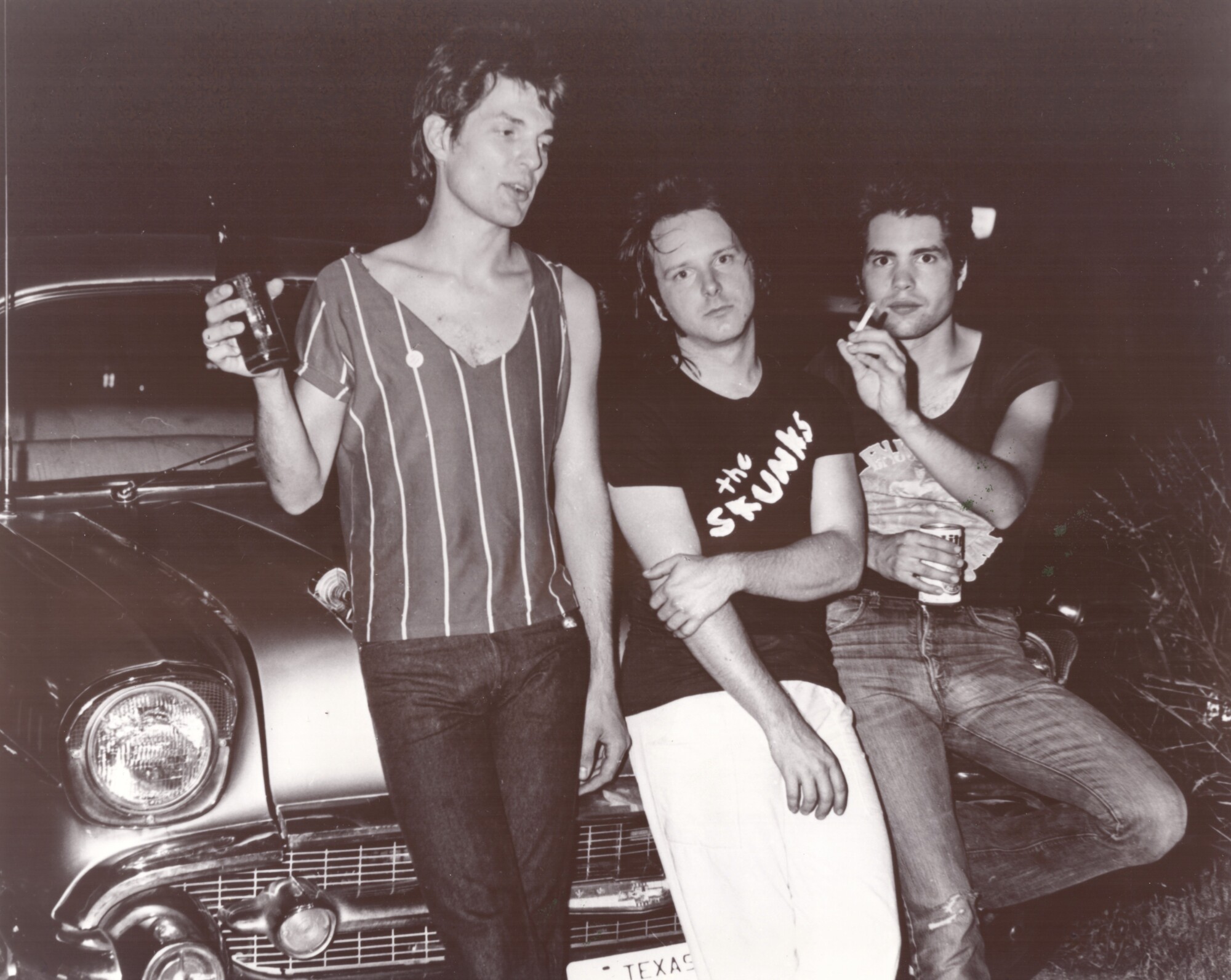
The Violators and The Skunks are considered the first punk bands in the area. Can you share some accurate dates when all that started for the two bands?
Female rock musicians in the 1970s were rare in Austin. Carla Olson, Kathy Valentine and Marilyn Dean were all friends of mine. They were trying for an all-girl punk band but couldn’t find a good bass player. We were hanging around together a lot anyway, so they asked me if I would at least help them get started. I said yes and we started rehearsing in late 1977. We played a lot of basic rock ‘n’ roll covers – Kinks, Who, and lots of Stones, plus Elvis Costello, The Damned, et cetera. Kathy and I wrote a song or two, and I wrote a song called ‘Gimme Some’ for them.
Carla was a great guitar player and singer, and Kathy was a really good rhythm guitarist and already an obvious candidate for becoming a lifer in the music business. I used to call her “Keith Richards’ kid sister.” She probably finds that annoying now. Or not. I’ll ask her next time I see her.
During rehearsal breaks, Eddie (then Carla’s boyfriend) would grab a guitar and he and I would jam. We recruited Bill Blackmon as our drummer. We knew the Violators would need an opening act, but weren’t thinking very far in the future.

We—Skunks and Violators– played a short set in front of a local Austin band on New Year’s Eve 1977 at a club called Soap Creek Saloon. The crowd hated us but we felt like we really had something. The Sex Pistols played San Antonio January 8, 1978 and The Violators and The Skunks began playing Raul’s less than a week later. The timing was fortuitous because the Pistols show created a huge sensation; even though only a few hundred were there, everyone heard about it and wondered what they had missed out on. People came to our shows expecting something wild and different. We gave it to them. Momentum built quickly. By summertime, The Skunks were playing several times a month and we were in the studio recording an album. As another mark of success, dozens of new bands were forming – many of them started by musicians who were inspired to do so by seeing us play at Raul’s.
By March, however, the strain of playing in two bands was taking a toll. I asked the Violators to find a replacement and they did.
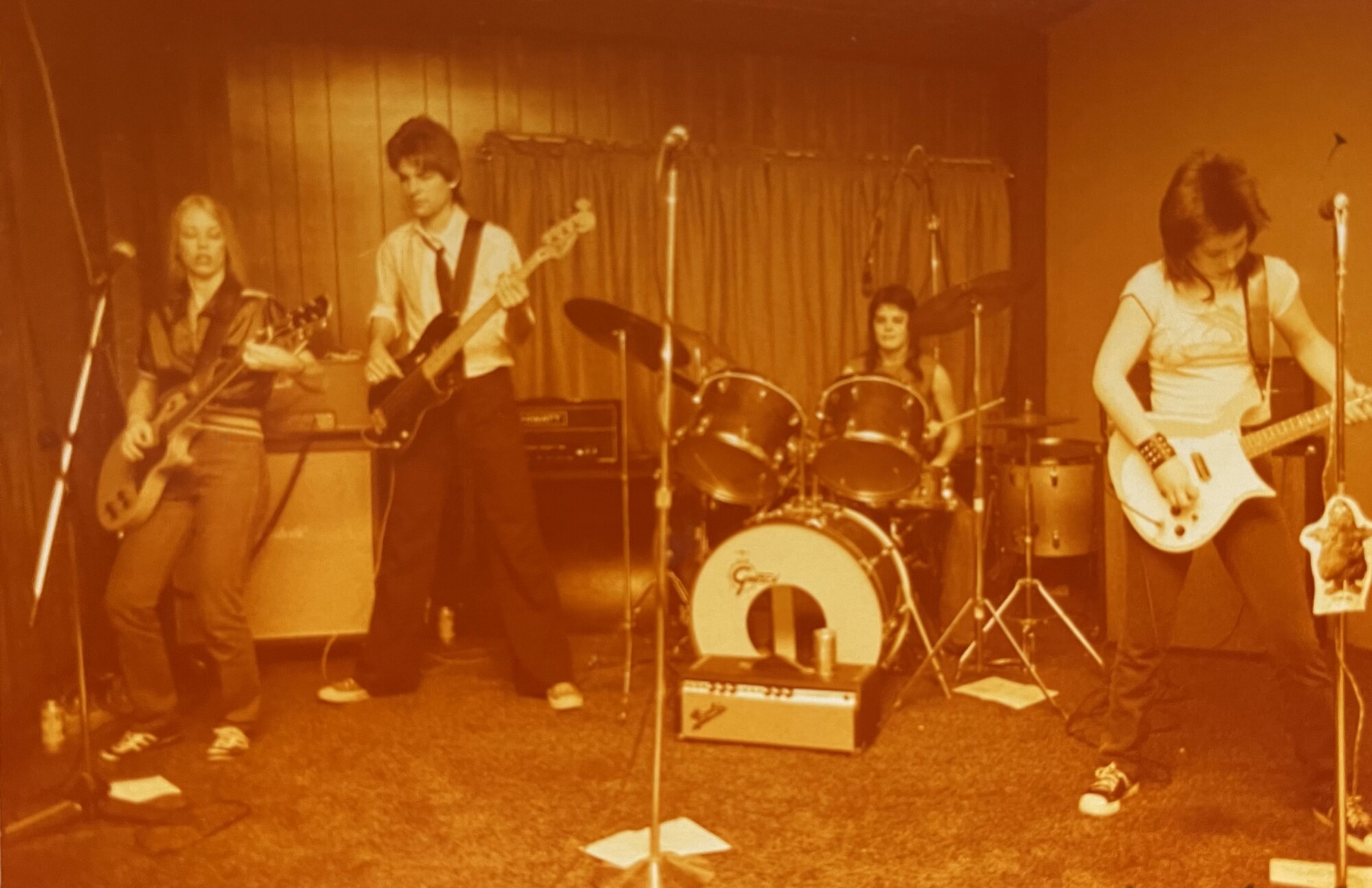
Tell us about Raul’s. What was the club like?
Raul’s was just a room, a rectangular space with cheap wall paneling and some plastic ferns, but it was run by three soulful, spirited, open-minded, generous-hearted Hispanic men: Roy Gomez, Joseph Gonzales, and Bobby Morales. I can’t imagine that the club would have worked at all if other people had been in charge.
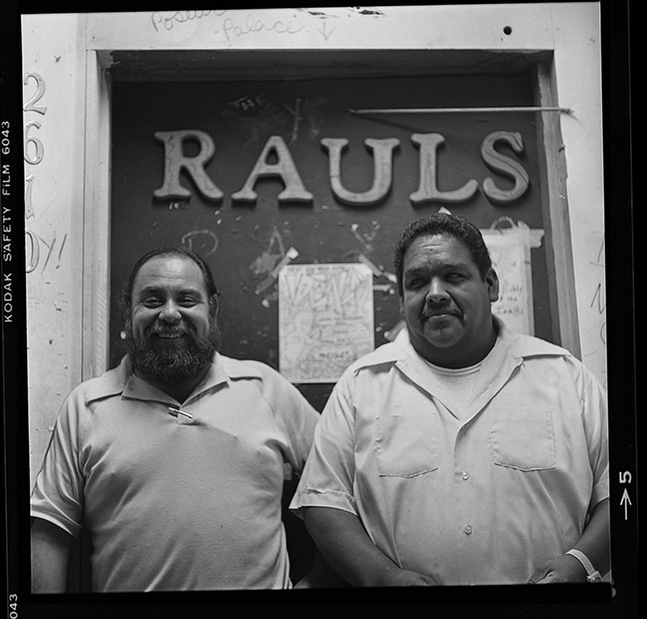
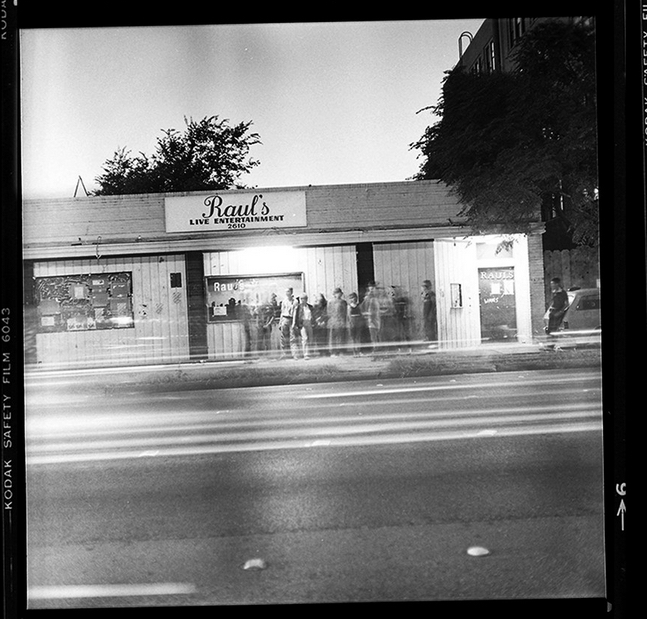
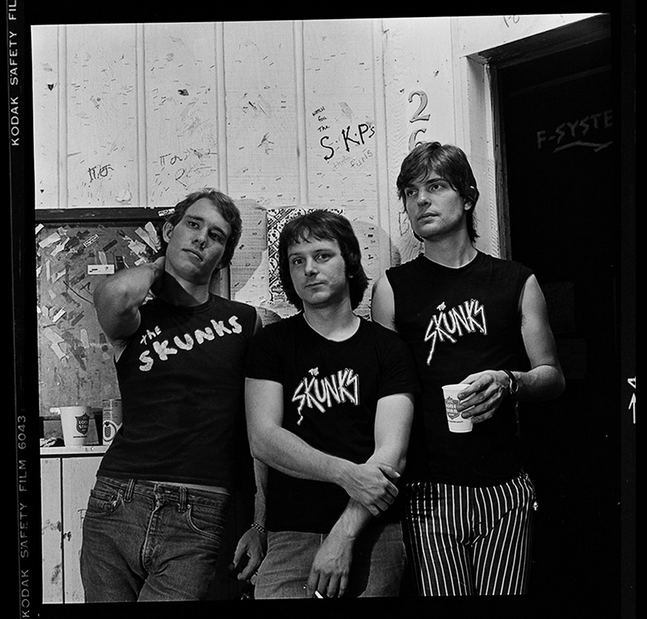
Tell us about the recording session of your debut album (“Black LP”). Was it self-released under the label name of “Rude Records”?
Joe Gracey, an Austin deejay and music journalist, had been an important figure during Austin’s progressive country music scene. Bobby Earle Smith was a songwriter and guitarist from a country band called Freda & the Firedogs. They had been recording local Austin blues bands when they came to see The Skunks in April 1978. They were knocked out. The next day we were recording in Gracey’s basement studio. At first, we talked about doing a single, but the recording was going so well they said “Let’s do an album.” The record was supposed to come out, we believed, in late ’78 or ’79, but it was delayed for various reasons and didn’t come out until 1981. Rude Records was Gracey & Smith’s label. It was not “self-released.” I did, however, urge local retailers and radio stations to boycott the record because of the long delay and other business disagreements, and therefore the distribution was quite curtailed. However, it became a collector’s item. These days I actually like the LP.
Your bandmate, Eddie Munoz left for Los Angeles at the end of 1978 and joined The Plimsouls. How did you get Jon Dee Graham on guitar in January 1979?
Jon Dee Graham was jamming with a band at the co-op where he lived, as a freshman student at University of Texas, when our roadie/band artist Richard Luckett was visiting a friend. Richard said: You gotta hear this guy, you gotta give him an audition. Jon Dee passed the audition with flying colors.
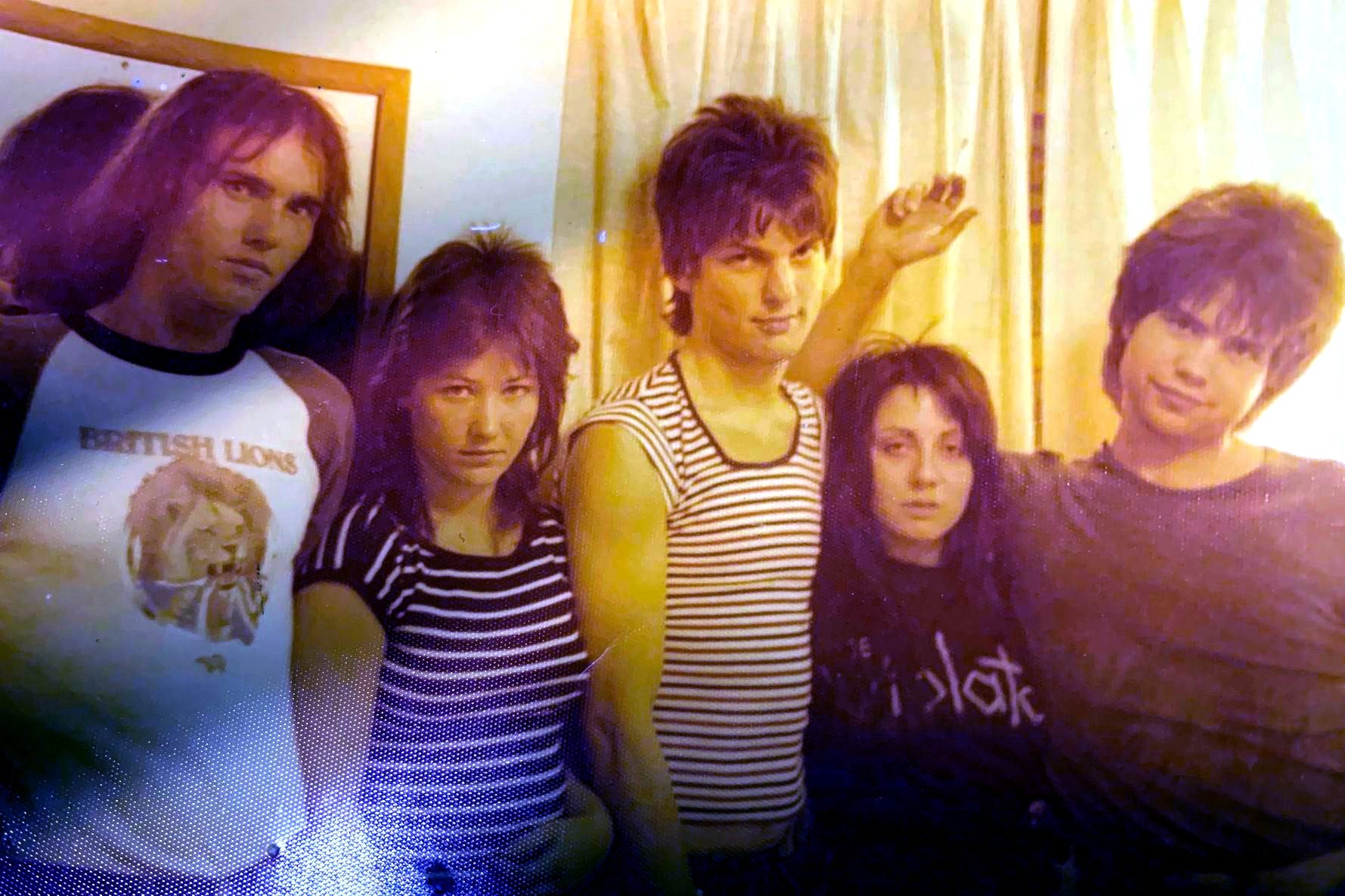
Tell us about the 1982 Republic Recording album release. What are some recollections from working on it?
The Republic LP was the first time that the band had been able to go into a high class studio with a real budget for recording. Our earlier records suffered because they were made so quickly, often without the kind of technical expertise necessary to corral a very LOUD three piece band like us. We admired Earl Mankey as a producer and were thrilled when he came on board to produce. We spent a couple of weeks in pre production; another first for us. I learned a lot about not only how to play for recording but how to write and arrange from Mankey.
Overall, the record is a mixed bag. A lot of the sounds are good. Some of the songs are good but others don’t hold up well. I was in a transitionary period regarding my songwriting and vocal style. My vocal cords were shot during the recording because of stress. Long story.
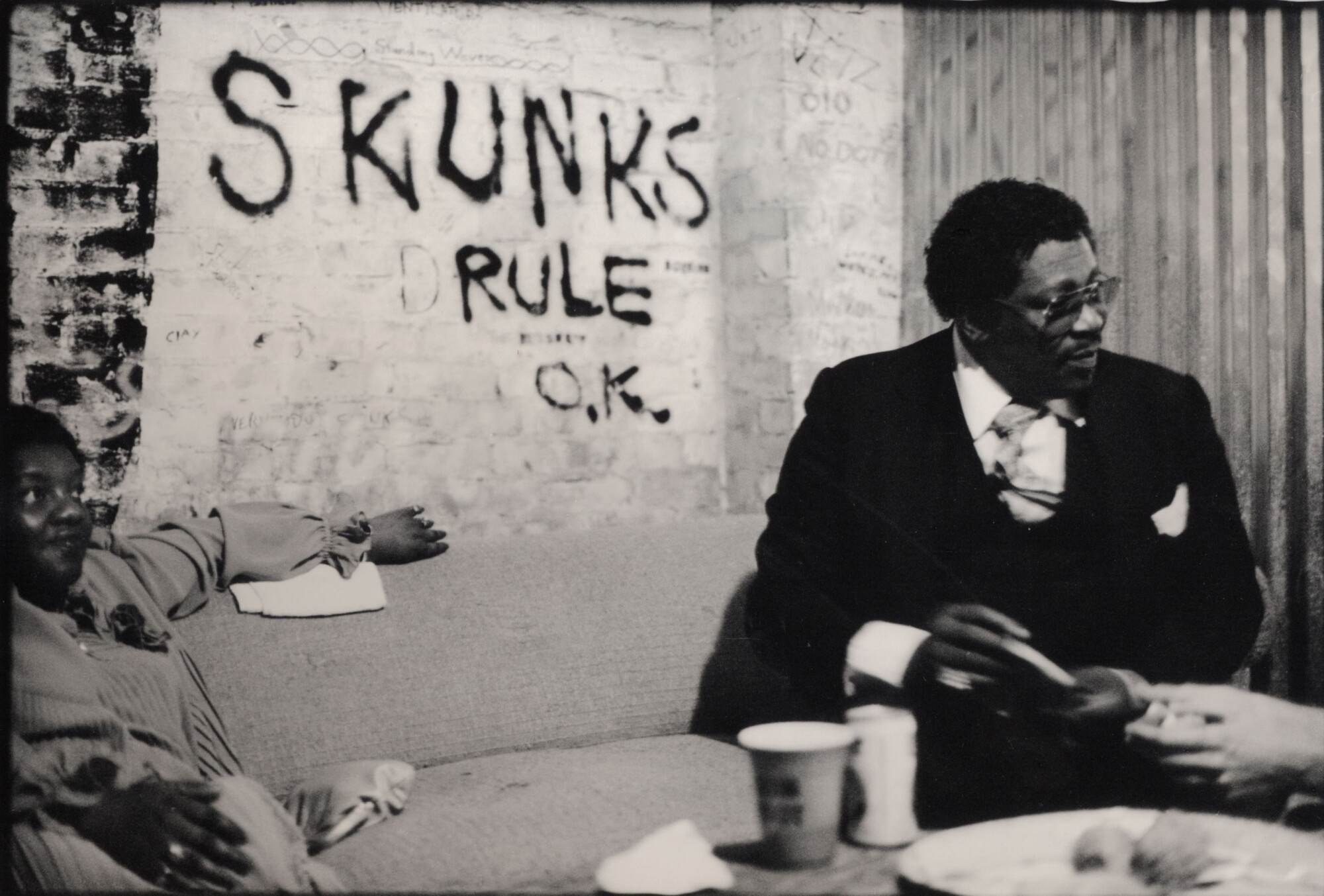
Tell us about The Violators and what are some of the most memorable moments you had.
Playing with The Violators was a great experience. It’s a great reminder of how much things change. The shock that people expressed, just seeing three women onstage rocking out, was thrilling. Some guys would make fools of themselves after the show, saying incredibly stupid, sometimes vile, things. We had a reporter come out to interview us who asked really perverse questions. The girls thought it was quite funny.
The Skunks were one of the first Austin punk bands to tour nationally. You played CBGB’s in August 1979 and Max’s Kansas City in 1980 and opened for The Ramones, The Police, Gang of Four, Ultravox, The Clash, John Cale, The Cramps and many others. What are some of the most memorable shows?
The Skunks opened for John Cale at the Armadillo and a few days later we went to see them play in San Antonio. I gave Cale a demo cassette and it turned out that the band listened to it in the van on the rest of their tour. My wife Lois and I went to New York a few months later, trying to get gigs for The Skunks but were having no luck at all until we ran into Cale at the Mudd Club. He said, “Call my agent.” We went to see his agent. She called up a half dozen clubs without even offering us a chair and in ten minutes, we had our first NYC tour booked. We had a weekend at CBGB that went well, but after the gig, all our guitars were stolen from our van.
We played a lot of different clubs in New York. It wasn’t easy, because we always lost money on those trips. Any money we made playing gigs on the way to NYC evaporated quickly because the Manhattan clubs didn’t pay us very much. For some reason we almost always seemed to go to the East Coast in the dead of winter. Putting up gig flyers when there’s a foot of snow on the ground isn’t a lot of fun. The best thing about playing New York back then was the adventure and the friendships we made. We got to be friends with Cale’s band, particularly the bass player, George Scott, and the bands 8-Eyed-Spy, Lydia Lunch, and the Raybeats, all of whom are related bands, and other people from the No Wave scene.
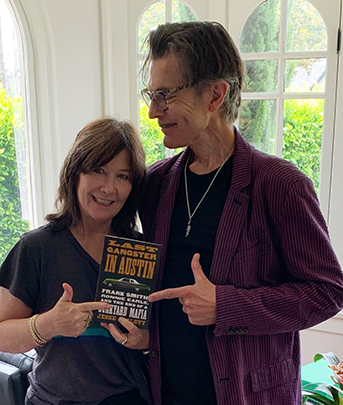
And what would be the craziest gig you ever did?
In some ways it’s the little things you remember. One night, we invited Elvis Costello to play a song with us. We played ‘Mystery Dance’ but then he looked at our set list and indicated that he’d just keep on playing. We were in the middle of the Nick Lowe song ‘Heart of the City’ when who walks in but Nick Lowe. Nick looked at us, did a double take and saw Elvis, and laughed.
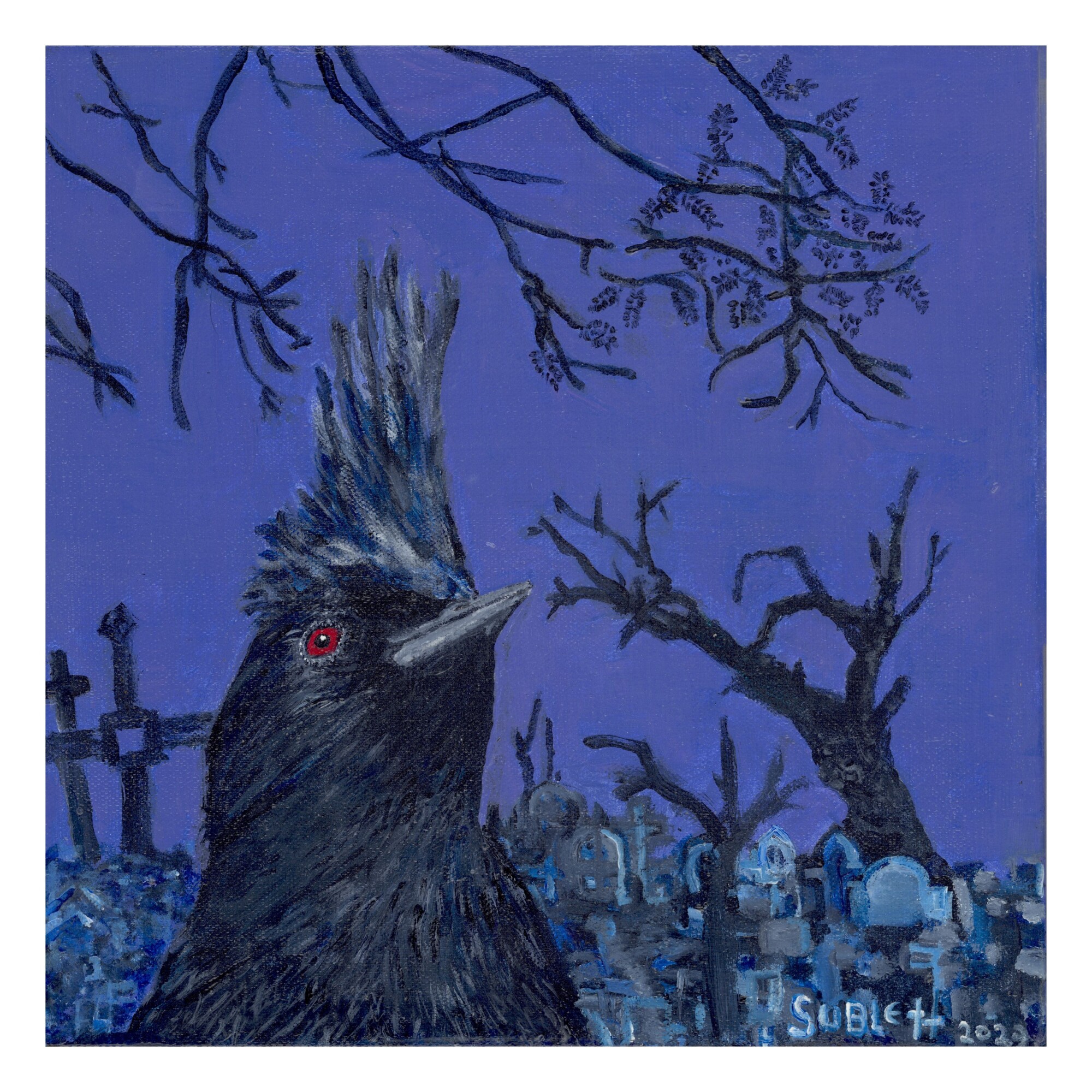
I would love it if you could share some light on bands like Flex, The Murder Ballad Show, Secret Six, Jesse Sublett’s Big Three Trio, World’s Cutest Killers…
Jon Dee Graham and I have been close friends since we first played together in The Skunks. For a while we were doing residency gigs at a couple of different venues in Austin, trying out new material as a duo or semi-acoustic trio. I had begun playing upright bass by that time. A lot of our songs were murder ballads, a mix of covers and originals. It was a lot of fun.
In late 1986, Lois and I decided to move to LA for a change of pace and so that I could pursue my writing career. The Go-Go’s had broken up, temporarily, as it turned out, and this period has since become known as their “hiatus.” We told Kathy we were moving out there and she phoned back and said, “Since you’re moving out here, why don’t we start a band?” I liked that idea and so we did it. Everybody in the band was a great player. The keyboardist and drummer had been in a band called Broken Homes. Kelly Johnson had played in the British metal band Girlschool. We had a lot of good songs. I was writing a lot of music at the time and our repertoire included a bunch of songs that Kathy and I co-wrote.
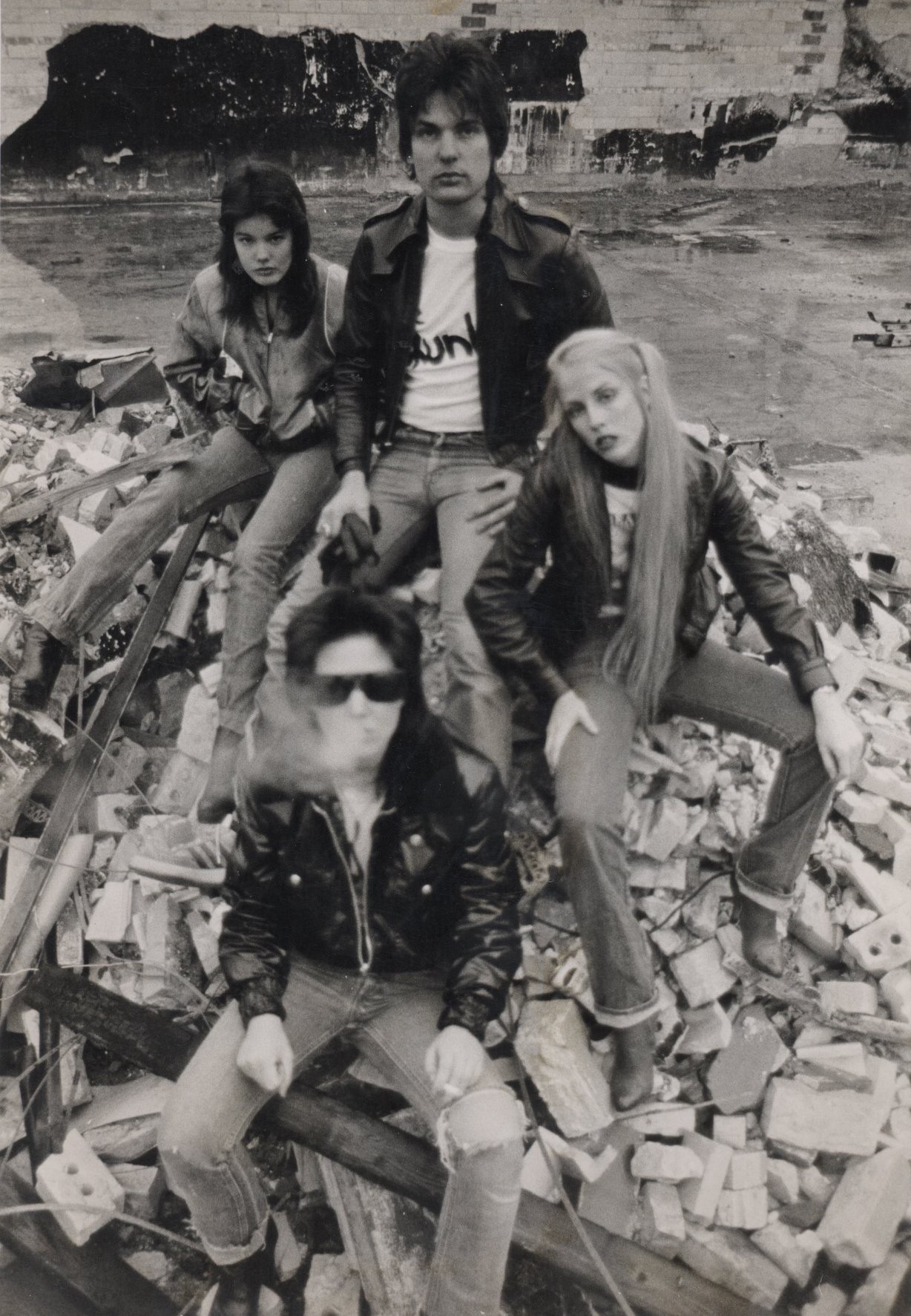
That project continued for a couple of years, after which I played with Carla Olson until we moved back to Austin. The Textones had kind of run its course when the old bass player left, so we became simply the Carla Olson Band, that is, until Mick Taylor joined the lineup. Mick is an astonishingly great musician. Just unbelievable. After all those years idolizing the Stones, practically living vicariously through that band, to play onstage or in a studio next to Mick, this monumental talent, as he played those riffs that were aural landmarks from my past, it was a fantastic experience. I contributed a couple of songs to the repertoire of that band as well: ‘Who Put the Sting on the Honey Bee’ and ‘World of Pain’.
So, it was a delirious twist of fate that these two women, whom I had played with at the beginning of the punk scene in Austin, would figure in my musical life in Los Angeles. I loved living in Los Angeles. I had a lot of great opportunities there, a lot of fun, and it was and still is an endless source of inspiration.
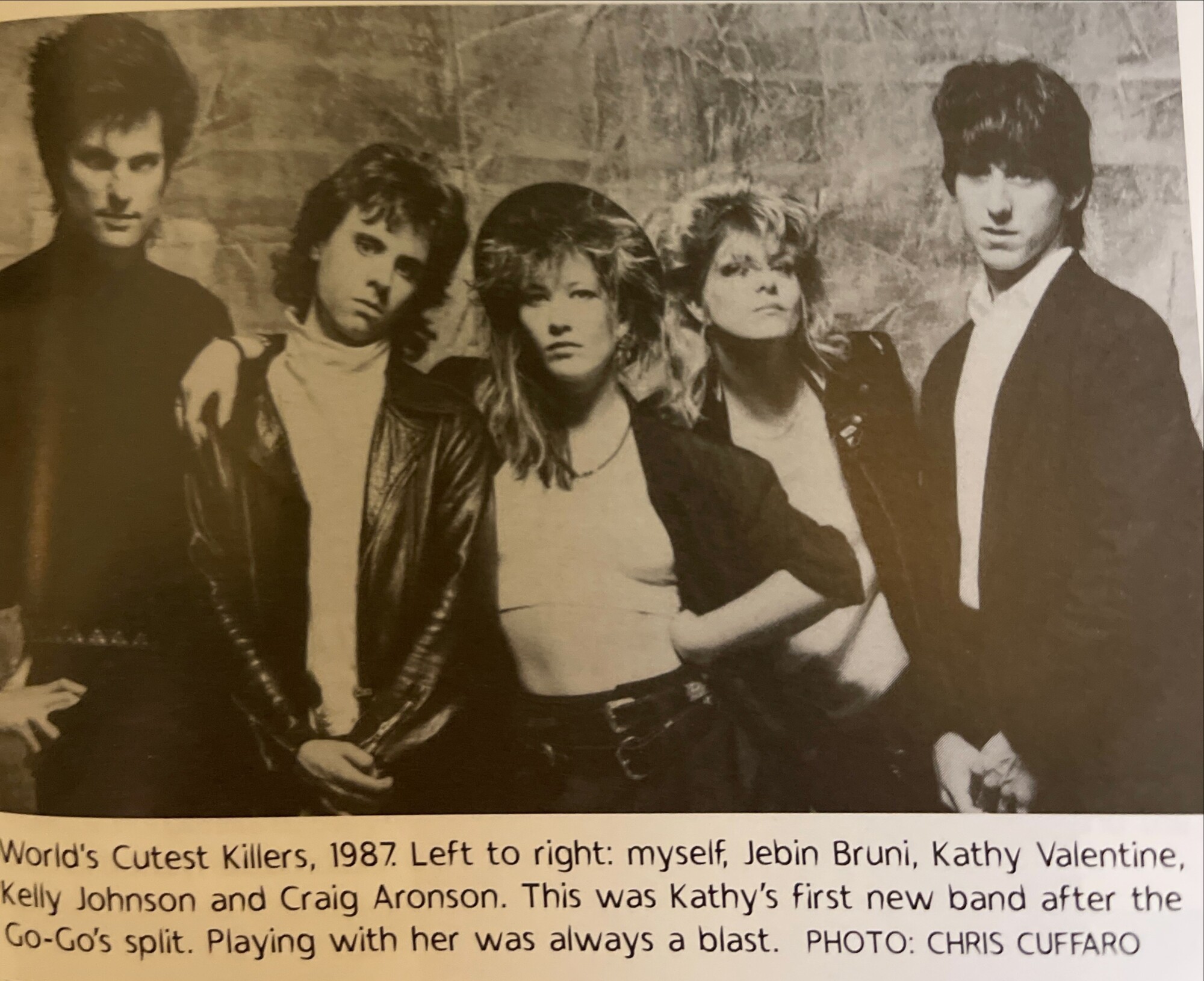
When The Skunks were playing Raul’s, touring bands often came to see us. Patti Smith showed up and sang with us after I met her at a poetry reading and invited her to the show. Blondie showed up as well; Clem Burke and Frankie Infante jammed with us. So did Elvis Costello. Joe Ely and members of The Clash jammed with us at the Continental Club after we opened for the show at the Armadillo.
You asked me about how I’ve met so many famous people. They say that simply showing up is one of the most important things you can do. I also believe in being friendly, outgoing, generous and engaged. The creative community is like a small town, no matter where you go. Show up, hang out, mix with people and you never know what kind of wonderful things might happen.
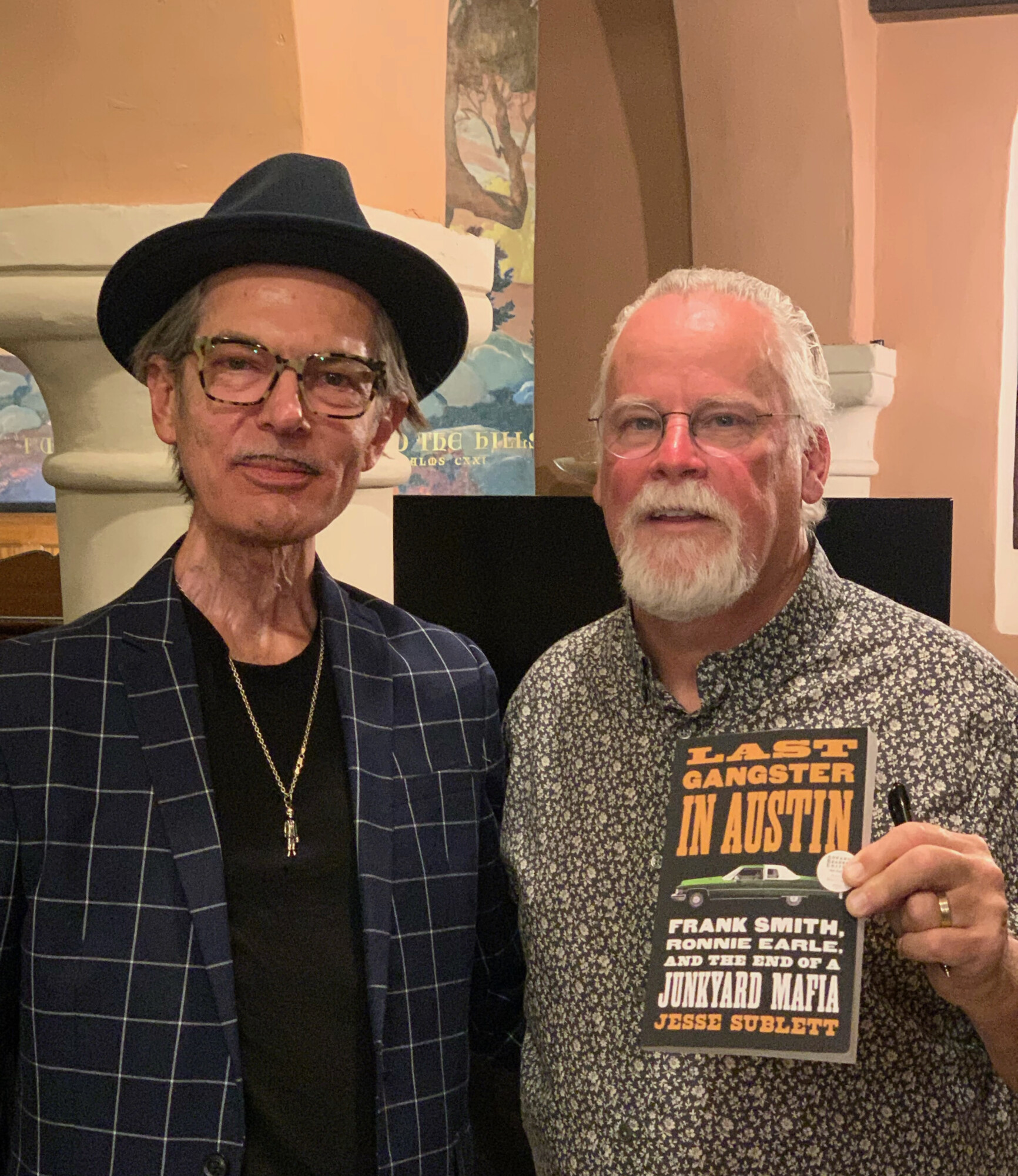
What would you say originally initiated your writing career?
My first ambition was to be a poet. A poem I wrote at age 11 about a classmate killed in a horse riding accident was published in the local paper. It wasn’t my first poem but it started me thinking seriously about what life as a professional creative might be like. Writing was my passion but I didn’t really have a plan for how to make it into a profession until I’d been playing music for over a decade. I noticed that Lou Reed and Bryan Ferry were fans of Raymond Chandler and Dashiell Hammett. I knew those names from the movie adaptations, like Chandler’s The Big Sleep and Hammett’s Maltese Falcon. I became a voracious reader of hardboiled crime fiction. During a slow period in my music career, I started writing reviews for the Austin Chronicle. Then I tried my hand at writing a short story featuring a bass player who moonlights as a detective. His name was Martin Fender. I got a lot of encouragement from writers I admired.
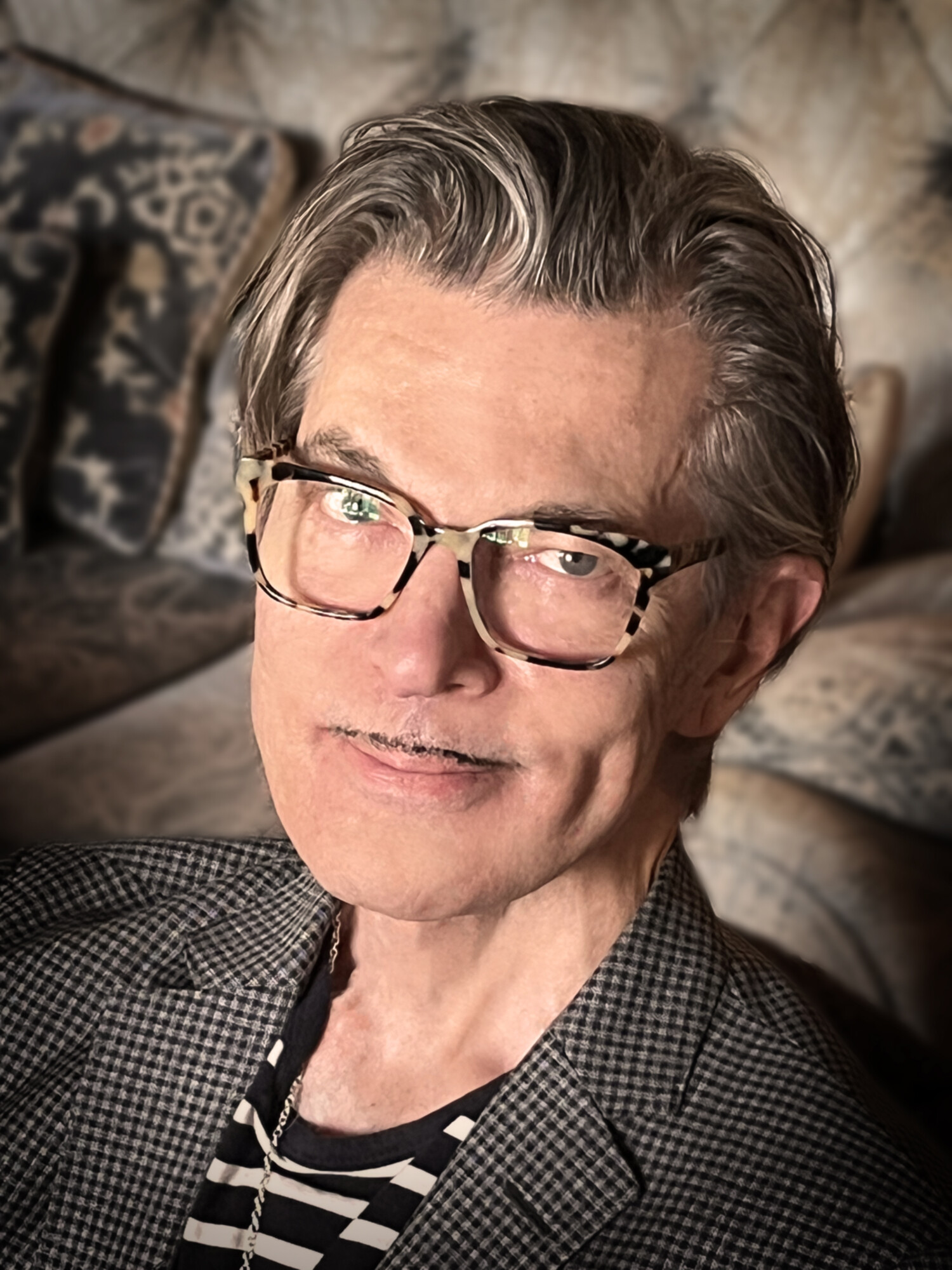
In 1987, my wife and I moved to LA, the town of which Raymond Chandler was the noir poet laureate, and my ambition was to become a rock ‘n’ roll Raymond Chandler. Even though I was writing about Austin. An editor at Viking Penguin had heard of me and I got a publishing deal. I published three Martin Fender novels: Rock Critic Murders, Tough Baby, and Boiled in Concrete. By the early 1990s, however, I had gotten involved with writing for documentary television and various low budget film/TV projects. I did that for a while, then we moved back to Austin in 1994 and I’ve been writing nonfiction books ever since. My memoir, Never the Same Again, is something I’m proud of, as it covers a lot of emotional ground, including the murder of my girlfriend by a serial killer in Austin, my battle with throat cancer, as well as my music career, my great love affair with my wife Lois, writing, and fatherhood. I’ve also co-written a history of the Armadillo World Headquarters with its founder, Eddie Wilson, and two true crime books that have been very well received, 1960s Austin Gangsters and Last Gangster in Austin: Frank Smith, Ronnie Earle, and the End of a Junkyard Mafia.
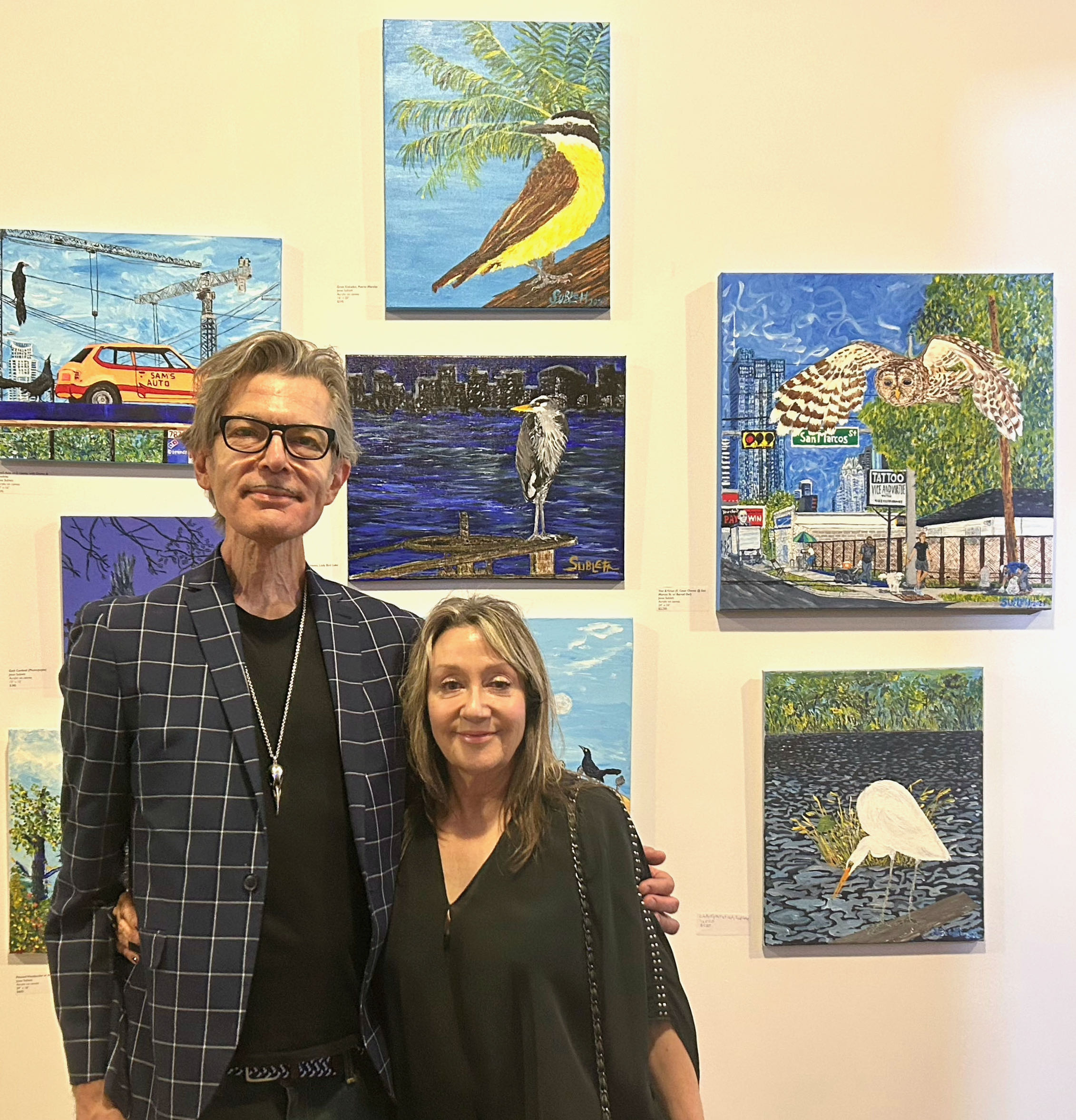
What currently occupies your life?
For the past few years, I’ve been spending more and more of my time painting. I paint birds more than anything else. Austin is a beautiful town, particularly because of its natural environment. Birds are plentiful here and they’re an endless source of fascination, beauty, and knowledge.
For the last several years, I’ve been selling my work to friends and fans who see it on my Facebook and Instagram pages, but this fall we decided to get involved in the local gallery scene. A venue called Cloud Tree reached out and we did a show there for the Austin Studio Tours in November and another one for the December Show & Market. It’s been great fun and we’ve made lots of new friends in the thriving art community here. A lot of people who buy my art are people who have followed me in years past as a musician, and others just admire my pictures. Either way, I feel lucky to be able to create things that bring people a measure of joy or even a moment’s distraction when they need it.
Klemen Breznikar
Headline photo: The Skunks (Jesse Sublett, Bill Blackmon, Eddie Munozby) and Patti Smith | Photo by Ken Hoge
Jesse Sublett Official Website / Facebook / Instagram / YouTube

